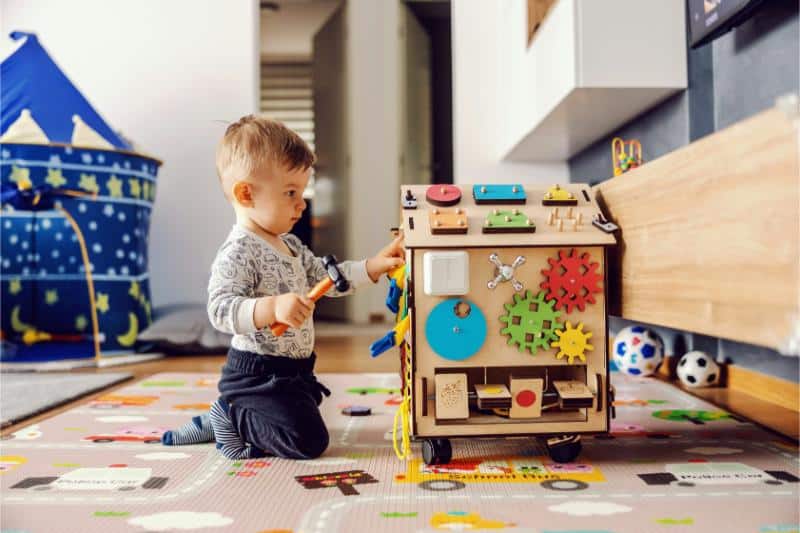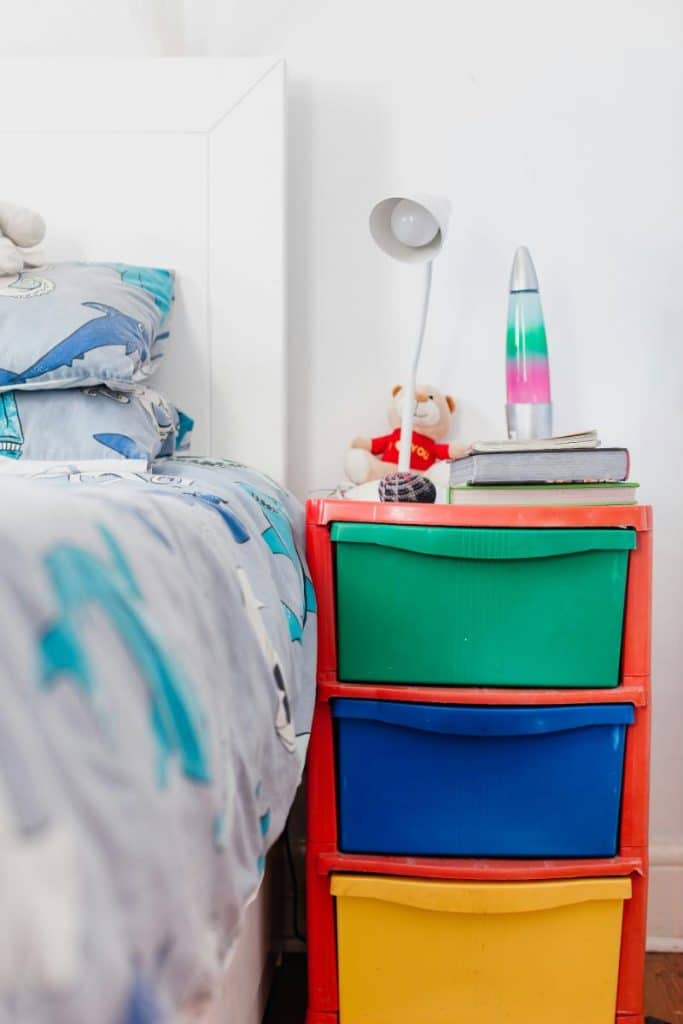Keeping children’s spaces organized and tidy is a challenge that parents and caregivers commonly face. From playrooms to bedrooms, these areas often bear the brunt of creative chaos. However, maintaining an organized environment for children is essential for their well-being and development. It not only fosters a sense of responsibility but also provides them with a conducive space for learning and play.

In this article, we’ll explore essential tips to help parents create and sustain organized spaces for their little ones.
Designate Functional Zones
One effective strategy for maintaining order in children’s spaces is to designate functional zones within the room. Divide the space into specific areas for different activities, such as play, study, and relaxation. This not only helps in maintaining order but also aids in teaching children about the importance of organization. Use colorful rugs or mats to clearly define these zones and make them visually appealing. Incorporate storage solutions within each zone to keep toys, books, and other items neatly organized. For instance, consider adding bins or shelves near the play area for quick and easy access to toys. By creating dedicated spaces for various activities, children will learn to associate specific areas with specific tasks, making it easier for them to maintain order.
Involve Children in the Organizing Process
Engaging children in the organizing process is a crucial step toward instilling a sense of responsibility and ownership of their space. Make organizing a fun and collaborative activity by turning it into a game or challenge. Encourage them to sort and categorize their toys or belongings, teaching them valuable skills in the process. Allow them to choose storage solutions, such as colorful bins or themed baskets, to make the process more exciting. By involving children in decision-making, they will feel a sense of pride and attachment to their organized space. Additionally, regularly declutter together, explaining the importance of letting go of items they no longer use. This not only keeps the space tidy but also teaches them about the value of a clutter-free environment.
Rotate Toys and Refresh Spaces
To prevent monotony and maintain a sense of novelty in children’s spaces, consider implementing a toy rotation system. Store some toys out of reach and periodically swap them with the toys currently in use. This not only reduces clutter but also reignites children’s interest in their belongings. Similarly, refresh the overall look of the space by updating decor or rearranging furniture. This can be done seasonally or whenever you notice a dip in your child’s engagement with their surroundings. The change not only keeps the environment visually stimulating but also serves as an opportunity to assess and reorganize the space based on your child’s evolving needs. By incorporating these periodic changes, you not only keep the space organized but also create an adaptable and dynamic environment for your child.
Extend Organization Beyond Indoor Spaces
While focusing on organizing indoor spaces for children, it’s essential not to overlook the importance of extending these principles to other areas, such as the garage. Implementing a garage storage system can be a game-changer, especially when it comes to managing outdoor toys, sports equipment, and seasonal items. Designate specific zones within the garage for different categories of items, ensuring that everything has its designated place. Install shelves, hooks, and bins to maximize vertical space and keep the floor clutter-free. This not only facilitates easy access to outdoor playthings but also reinforces the importance of organization throughout the entire living space. By integrating an organized garage storage system, parents can seamlessly transition between indoor and outdoor activities, creating a holistic approach to maintaining order in the household.
Foster Independence with Accessible Storage
Encouraging independence in children involves creating an environment where they can easily access and put away their belongings. Invest in child-friendly storage solutions that are within their reach. Low shelves, labeled bins, and hanging organizers are excellent choices. This accessibility empowers children to take charge of their space, fostering a sense of autonomy. Teach them the importance of returning items to their designated places, making the cleanup process a manageable and routine part of their daily activities. By promoting independence in an organization, parents not only lighten their load but also instill valuable life skills in their children.

Embrace a Color-Coded System
Introduce a color-coded system to add a layer of organization and visual appeal to children’s spaces. Assign specific colors to different categories of items, such as toys, books, and art supplies. Use colored bins, labels, and even wall paint to designate these categories. This not only makes it easier for children to locate and return items but also turns organization into a playful and engaging experience. Embracing a color-coded system also aids in teaching children about categorization and sorting, skills that extend beyond the realm of organization and contribute to their cognitive development.
Promote Daily Cleanup Routines
Establishing consistent daily cleanup routines is a key element in maintaining organized children’s spaces. Encourage children to allocate a few minutes each day to tidy up their play area or bedroom. Make it a part of their routine, such as before bedtime or after playtime. This not only prevents clutter from accumulating but also instills a sense of responsibility and discipline. Create a checklist or visual guide to make the cleanup process more engaging. Acknowledge and praise their efforts, reinforcing the positive habit of keeping their space organized. Consistent daily cleanup routines help children understand that maintaining order is an ongoing and manageable task, promoting a sense of pride in their environment.
Maintaining organized and tidy spaces for children involves a combination of strategic planning, involvement, and creativity. By designating functional zones, involving children in the process, rotating toys, extending organization to the garage, fostering independence, and embracing a color-coded system, parents can create an environment that promotes order and positive habits. These practices not only contribute to the well-being of the child but also serve as building blocks for essential life skills. As parents integrate these tips into their daily routines, they lay the foundation for a home that is not only organized but also conducive to a child’s growth and development.
